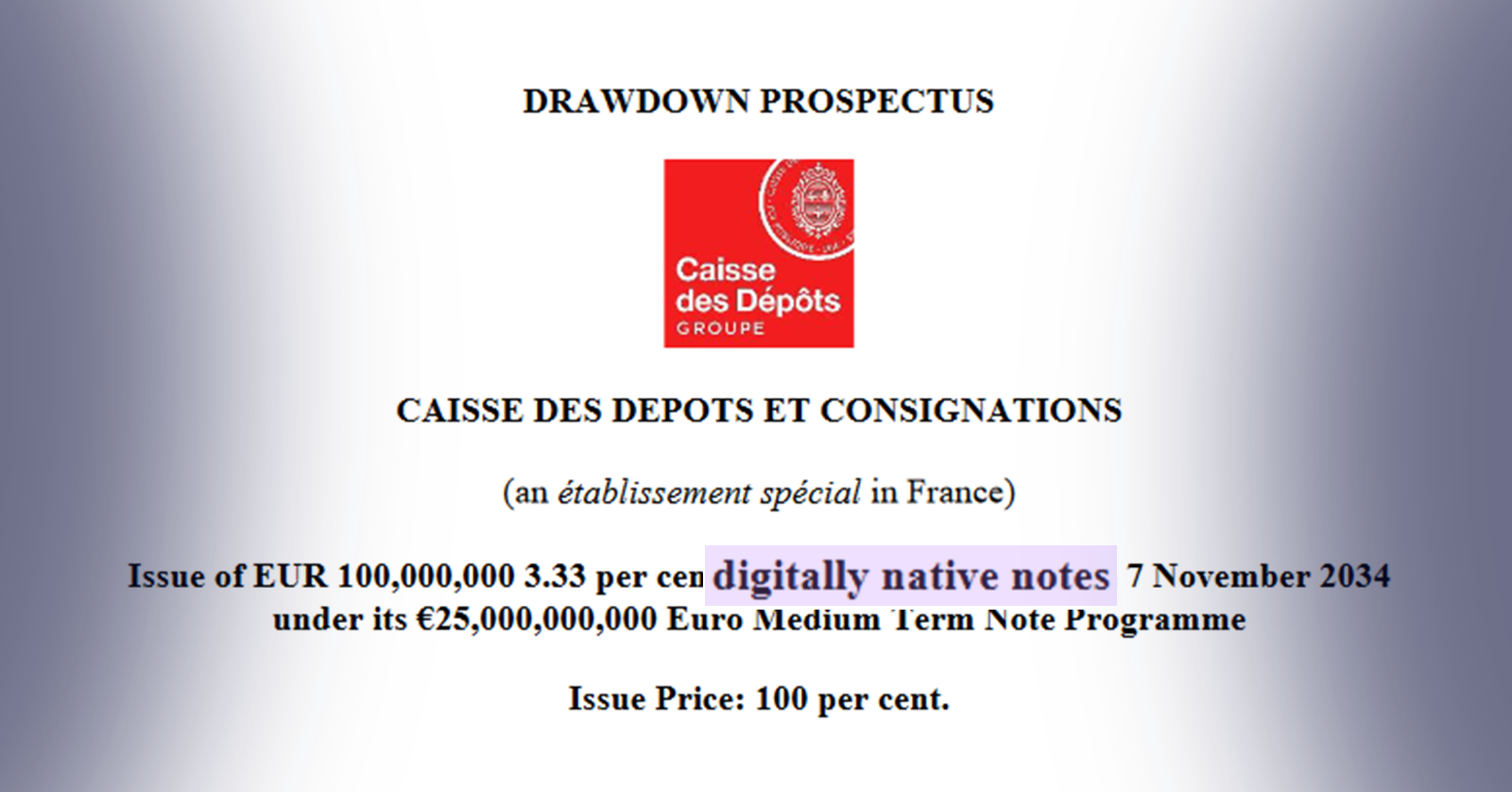Caisse des Dépôts: France First Tokenized Bond in Digital Euro
Nov. 11, 2024

A "digitally native" bond by the Caisse des Dépôts
The Caisse des Dépôts issued a 100 million euro bond with a ten-year term, an annual coupon of 3.33%, and a maturity date of November 7, 2034. These are conventional terms for a debt instrument issued by a top-tier global institution.
However, this issuance has drawn the attention of financial innovation actors since last week: it was issued and traded on the blockchain, a distributed ledger.
Two interoperable blockchains and a digital euro
A transaction on the blockchain is atomic and instantaneous: it follows an all-or-nothing rule. If all conditions are met, the exchange of a security for payment is executed in a single action. This characteristic requires that the tokens representing the securities and the currency be available on the blockchain.
On the security side, the Caisse des Dépôts used Euroclear’s blockchain (D-FMI) to tokenize its bond, representing it as an exchangeable token.
On the settlement side, the Banque de France issued a digital euro, a central bank digital currency (CBDC), on its dedicated DL3S blockchain (Distributed Ledger for Securities Settlement System). This token was then made available on the D-FMI blockchain via an interconnection, to be exchanged for the security in a single, atomic transaction.
Thus, ICBC Luxembourg acquired the bond exclusively through blockchain transactions, exchanging digital euros obtained from the Banque de France for the securities issued by the Caisse des Dépôts.
The other participants in the issuance are BNP Paribas (paying agent), Natixis, and Crédit Agricole Corporate and Investment Bank (CACIB) (arrangers).
European Union exploratory work until the end of November
The solution presented by the Banque de France, Euroclear, and the Caisse des Dépôts is part of the main experiments conducted under the European Central Bank's call for projects. Around fifteen similar projects are taking place this year in an experimental phase that concludes at the end of November.
The ECB assigned these projects to three central banks that developed blockchain solutions: Banque de France, Bundesbank, and Banca d'Italia.
Three digital euro models to explore
Each national central bank participating in the project has the opportunity to explore one of the three potential solutions for digital euro issuance:
- the integrated model: a blockchain developed by the Eurosystem that manages both securities delivery and payment. All transactions would go through this infrastructure;
- the interoperable model: a blockchain dedicated to issuing central bank digital currency that can connect to other blockchains to conduct transactions. This is the model used for the Caisse des Dépôts issuance;
- the distributed model: the Eurosystem issues central bank digital currency tokens on different blockchains, making digital euro exchanges native on each blockchain used.
ABN AMRO and Rabobank use the digital euro for repo transactions
In the Netherlands, ABN AMRO announced the issuance of tokenized ECP (Euro Commercial Paper, a short-term debt instrument) in early October. The Dutch bank then conducted a repo transaction on its ECP with Rabobank to borrow central bank digital currency over four transactions, two of which were intraday.
The central bank digital currency used was the euro issued by the solution developed by the Banque de France.